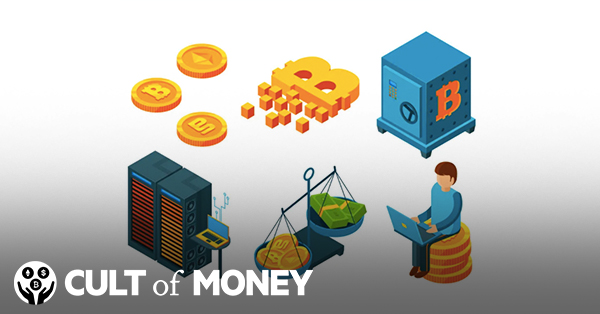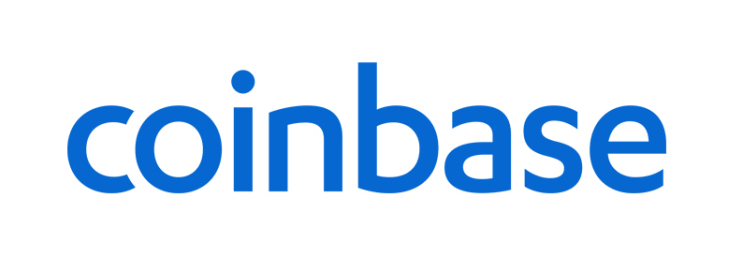
These days, cryptocurrency investors have a plethora of exchanges and online brokerages they can use to trade cryptocurrency.
And, out of all the cryptocurrency exchanges out there, Binance is the largest in terms of trading volume. It’s also globally accessible and offers support for over 500 cryptocurrencies and stablecoins.
Our Binance review is covering all of the features, pricing, and pros and cons of this leading exchange. It’s also outlining how U.S. investors can use Binance despite the main exchange not being available and some Binance alternatives to try.
Binance Details | |
|---|---|
Product Name | Binance.com and Binance.us |
Product Type | Cryptocurrency Exchange |
Supported Coins | 500+ |
Interest Rates | 0.10% Maker And Taker Fee |
Promotions | Earn up to $100 in rewards |
Pros & Cons
Pros
Cons
Who Is Binance?
Binance is a global cryptocurrency exchange that began in 2017. Currently, Binance is the largest cryptocurrency exchange in the world in terms of 24 hour trading volume, surpassing the likes of Coinbase, KuCoin, and dozens of other contenders.
Originally, Binance had its headquarters in China. However, due to regulatory challenges, Binance now has several offices around the globe.
Binance Features
Binance is the largest exchange in terms of trading volume, and this isn’t exactly surprising. With competitive fees, extensive coin support, and numerous trading features, it’s a comprehensive platform.
However, investors must know the difference between the Binance.com and Binance.us platforms, as well as how they can take advantage of Binance.com’s extensive offerings.
Binance.com vs Binance.us
Binance.com is the company’s main cryptocurrency exchange and is where you get most of the features. Currently, U.S. investors must use Binance.us instead. This exchange lets you trade 60 cryptocurrencies, including Bitcoin, Chainlink, Ethereum, Solana, and USDT.
Overall, Binance.us is a quick, low-fee way to buy and sell cryptocurrency from your phone or computer. However, it’s not nearly as comprehensive as Binance.com. Furthermore, Binance.us isn’t available in several states, including
- Connecticut
- Hawaii
- Idaho
- Louisiana
- New York
- Texas
- Vermont
Because of state restrictions and a smaller list of supported coins, U.S. investors may be better off using exchanges like Coinbase or Gemini that are based in the United States.
However, for international investors, Binance.com is definitely one of the best exchanges out there because of its range of features.
Buy Cryptocurrencies
Binance.com supports numerous funding options for cryptocurrency purchases, including:
- Bank Deposit: Buy cryptocurrency with regular fiat after making a bank transfer from your bank account to your Binance account.
- Debit And Credit: Use your debit or credit card to buy cryptocurrency.
- Binance P2P: Buy and sell cryptocurrency on Binance’s global peer-to-peer marketplace.
- Third-Party Payment: Use third-party providers like Simplex and Paxos to purchase cryptocurrency.
You can make purchases with USD or a dozen other currencies. This payment flexibility is one of the reasons Binance is popular around the world.
Binance also supports over 500 cryptocurrencies, including leading tokens like Bitcoin and Ethereum as well as smaller altcoins.
Cryptocurrency Trading
Binance caters to beginner investors because of the range of purchasing options and currencies it supports. Additionally, Binance has numerous trading tools that are useful for more active investors:
- Convert And Over-The-Counter (OTC): Convert cryptocurrencies you hold into other cryptocurrencies and stablecoins. You can also place OTC trades over $10,000 USDT. This helps you avoid fees and keeps trades private between buyers and sellers, letting people move larger amounts of crypto without potentially disrupting markets.
- Spot Trading: View live cryptocurrency prices and available trading pairs. Binance lets you place limit, market, and stop-limit orders. Binance also has an advanced trading view that includes more data, technical indicators, and trading tools for investors.
- Margin Trading: Get up to 10x leverage on your trades for certain trading pairs.
- Futures Trading: Use leverage to open long or short positions on various cryptocurrencies versus trading at spot price.
- Liquid Swap: Swap two cryptocurrencies or fiat using Binance’s liquidity pool. Alternatively, deposit your cryptocurrency or fiat to add liquidity to the pool to earn interest and from transaction fees.
For completely new cryptocurrency investors, features like margin and futures trading look intimidating. Even spot trading has a learning curve with all of the technical analysis and data you get upfront.

Screenshot of the Binance trading platform
However, beginner investors should be able to quickly learn how to buy and sell crypto while advanced traders have all the tools they need. The fact you can also earn passive income by adding liquidity to Binance’s liquidity pool is another enticing feature.
Cryptocurrency Wallet
Binance has an extension-based wallet you can use to send and receive funds. Binance also recommends using TrustWallet, a mobile cryptocurrency wallet that supports dozens of cryptocurrencies.
You can use your own wallet as well, including popular options like MetaMask and Ledger. Generally, it’s best to have more control over your wallet and private keys. So try to avoid holding large amounts of cryptocurrencies on an exchange if you’re not actively trading.
Binance Card
Like Coinbase and other exchanges, Binance has its own cryptocurrency rewards card. The Binance Card is a Visa debit card that works anywhere that accepts Visa.
With this card, you transfer crypto from your spot wallet to your funding wallet. From there, you can spend cryptocurrency on daily purchases, and Binance doesn’t charge administrative or processing fees.
Cardholders earn up to 8% cash back in the form of Binanance Coin (BNB), the platform’s native currency. Binance pays cash back daily, but your cash-back rate depends on how much BNB you hold on average in your Binance wallet.
Here’s how Binance’s BNB reward tiers break down:
Binance Card Reward Tiers | ||
|---|---|---|
Card Level | BNB Monthly Average Balance | BNB Rewards |
1 | 0 | 0.1% |
2 | 1 | 2% |
3 | 10 | 3% |
4 | 40 | 4% |
5 | 100 | 5% |
6 | 250 | 6% |
7 | 600 | 8% |
BNB has traded around $400 to $600 for much of 2021 and is currently around $570. Therefore, reaching card level 2 and unlocking 2% cash back isn’t prohibitively expensive. But for higher tiers, you’re looking at thousands or hundreds of thousands of dollars in BNB requirements.
A 2% rate is still competitive, but compare the Binance Card to cards from companies like Crypto.com and Coinbase. Rates can change, and different cards have various perks and reward tiers that might suit your spending habits more than others. Plus, Binance Card is only available in Europe so U.S. consumers can’t apply.
Crypto-Backed Loans
One advantage of holding cryptocurrency is that you can leverage it to take out loans. This lets you borrow certain cryptocurrencies for staking, margin trading, or to help cover emergency expenses. Binance has numerous cryptocurrencies that you can borrow, including:
- ATOM
- AAVE
- BTC
- COMP
- ETH
- LINK
- SOL
- SUSHI
- USDC
- USDT

You can post collateral using over a dozen cryptos and stablecoins. Different coins have different loan-to-value (LTV) ratios. For example, Solana has an initial LTV of 60% whereas Bitcoin and Ethereum are 65%.
Loan terms range from 7 days to 180 days. Interest is calculated hourly, and there aren’t penalties for early repayment. You see your loan’s interest rate when placing the order.
If you miss payment, Binance charges you three times the hourly interest rate for 72 or 168 hours depending on your original loan term. After this overdue duration, Binance liquidates your collateral to repay the loan.
Your loans are overcollateralized to protect lenders. But if you can leverage the cryptocurrency you borrow to turn a profit through staking or margin trading, it could be worth it. And, as mentioned, you can borrow cryptocurrency to cover expenses and then repay your loan later to avoid having to liquidate your crypto.
Other companies like BlockFi and Celsius also let you take out crypto-backed loans, so it’s worth comparing interest rates between multiple platforms.
Binance Earn
The easiest way to think of Binance Earn is to view it like a high-interest savings account for your crypto. Except, instead of earning a lackluster APY, you can find cryptocurrencies that pay up to 70% APY.
Binance Earn actually has numerous earning options depending on your level of risk tolerance. Here are some of the main features:
- Flexible Savings: Deposit cryptocurrency in a flexible savings account to earn daily interest. You can withdraw your crypto whenever you want.
- Locked Savings: Choose a deposit period you lock up your cryptocurrency for and earn daily interest.
- Auto Investing: Pick a cryptocurrency to invest in, your initial investment amount, and how often you want to reinvest in that asset. This is a dollar-cost-averaging strategy that helps you regularly invest in crypto. The crypto you buy deposits in a flexible savings account automatically so you earn interest.
- DeFi Staking: Choose from Binance-selected decentralized products to stake various cryptocurrencies and earn rewards. You can also stake BNB through the BNB Vault service or stake with Locked Staking to potentially earn even more rewards.
Binance Savings is probably the simplest way to begin earning interest on your crypto. The option to stay flexible also reduces risk since you can sell or transfer your holdings at any point.
There are even more options under the Binance Earn umbrella to put your crypto to work. This versatility is one of Binance’s strengths, and if you’re interested in staking or a crypto savings account, Binance is quite compelling.
Binance Smart Pool Mining
If you want to mine Bitcoin, the Binance Smart Pool is one feature that might catch your eye.
Smart Pool automatically switches the cryptocurrencies you’re mining to maximize efficiency. Specifically, you can mine Bitcoin, Bitcoin Cash, or Bitcoin SV depending on what generates the most return. All your mining rewards are paid out as BTC, but it’s a more efficient way to mine.
You can also create a regular Binance mining account and mine for Proof-of-Work cryptos like Bitcoin and Ethereum.
NFT Marketplace
Non-fungible tokens (NFTs) are incredibly popular right now, so it’s no surprise that Binance is jumping aboard the bandwagon.
With Binance NFT, users can buy, sell, and mint NFTs on its marketplace. This lets collectors buy NFTs but also opens the door for digital creators to sell their creations.
Binance NFT also supports initial game offerings (IGO), which are NFTs for upcoming gaming projects. If you want to dabble in the metaverse and new wave of games like Decentraland and The Sandbox, this is another perk.

Of course, Binance NFT isn’t nearly as large as OpenSea, the world’s largest NFT marketplace. But this new feature is just another example of how comprehensive Binance is as an exchange.
Binance Smart Chain
The Binance Smart Chain (BSC) is a blockchain network that can run smart contract applications. This blockchain runs in parallel to the regular Binance Chain (BC) which is what supports actual trading on Binance.
Smart contracts are basically self-executing contracts that run on a blockchain network. And, since the BSC is compatible with the Ethereum Virtual Machine (EVM), it can run Ethereum-based decentralized apps (dApps).
That's a lot of terminology to digest. But the main takeaway is that Binance is more than your average exchange. The regular Binance Chain is what facilitates trading on the exchange and the Binance Smart Chain is what helps with scalability and introducing smart contracts. Together, you end up with a platform that offers fast trading but also options like cryptocurrency staking.
This tech is what runs behind the scenes and makes Binance one of the best cryptocurrency exchanges out there. BSC isn’t replacing Ethereum by any means, but the cross-chain compatibility and features it opens up are benefits.
Are There Any Fees?
Binance has some of the lowest trading fees out of all cryptocurrency exchanges. Standard fees start at a 0.10% maker fee and 0.10% taker fee.
You get even lower fees through the VIP program. To join this program, you have to trade a certain amount of BTC within thirty days or own at least 50 BNB. The higher your trading volume or the more BNB you own, the better your trading discounts.
Referring friends to Binance also lets you earn up to 40% commission from your referrals’ trading fees, which helps offset your own trading fees.
Binance has various crypto withdrawal fees and minimum withdrawal amounts you can view on its website. However, withdrawal fees are generally quite low. Finally, Binance doesn’t charge deposit fees for ACH or domestic wire payments but charges 4.50% for debit card payments.
How Does Binance Compare?
If you’re an international investor, Binance is an excellent choice because of Binance.com's low trading fees and impressive number of features. But if you live in the United States, you'll need to use the more limited Binance.us.
United States residents might prefer to open account with a different exchange that offers more features or supports more coins in their country. And even if you live outside the U.S., it should be noted that Binance is less beginner-friendly than exchanges like Coinbase or Gemini.
See how Binance compares in the quick table below:
Header |  |  |  |
|---|---|---|---|
Star Rating | |||
Trade Fees | Starts at 0.10% | Starts at 0.50% | $0.99 to 1.49% |
Debit Card Fee | 4.50% | 3.99% | 3.49% |
Supported Currencies | 500+ | 100+ | 50+ |
Cell |
How Do I Open An Account?
You can create a Binance account through its mobile app or web version. You register with your email or phone number.
From there, you verify your identity by uploading personal information, government-issued ID, and a selfie. This is part of Binance’s new KYC requirements.
Verification times and processes differ slightly depending on your country. Overall, you should have complete access to your Binance account within a week or two.
Is Binance Safe?
Binance helps you improve account security with features like two-factor authentication. You can also add or remove authorized devices and wallet addresses. These tips, alongside using a strong password and not sharing personal information online, help keep your account safe.
However, there are risks to using Binance like other exchanges. The company has an insurance fund to help it cover positions from bankrupt investors, but you’re not insured against hacks, theft, or scams.
Binance was hacked in 2019 and lost 7,000 BTC, worth about $40 million. Binance compensated users in full, which is a positive sign. But the hack shows that even the largest exchange in the world isn’t invulnerable. Remember, you can take security into your own hands by using a wallet like Trezor or Ledger to maintain full control over your funds.
Is It Worth It?
If you’re an international investor and want low trading fees and a plethora of features, Binance is certainly worth it. This is especially true if you’re also interested in staking or want a crypto interest account alongside numerous trading tools.
But for many U.S. investors, Binance.us might not be quite there yet. Fees are still competitive, but regulatory concerns and a lack of features pull it down. If you live in the United States, you may want to consider options like Coinbase, Gemini, or even mobile-focused platforms like Voyager before turning to Binance.us.
Binance Features
Product Type | Cryptocurrency exchange |
Min Purchase | Varies depending on trading pair |
Supported Coins | 500+ |
Free Wallet | Yes |
Maintenance Fees | No |
Deposit or Withdrawal Fees | Almost no deposit fees; withdrawal fees are low buy vary by coin |
Trading Fees | Standard fees are a 0.10% maker fee and taker fee |
Supported Payment Types | Debit Card |
Insurance | U.S. deposits on Binance.us are FDIC-insured up to $250,000. However, Binance.com relies on its own insurance fund and doesn’t insure your holdings against theft or loss of access. |
Security | 2-Factor Authentication is the main security feature. You can also add verified wallet addresses and authorized devices. |
Mobile App Availability | Android and iOS |
Web/Desktop Availability | Yes |
Custom Support Options | Binance has a FAQ support desk as well as live chat support. You can also contact Binance support on Twitter @BinanceHelpDesk |
Promotions | Earn up to $100 in cash and cashback vouchers |

Tom Blake is a personal finance writer with a passion for making money online, cryptocurrency and NFTs, investing, and the gig economy.

